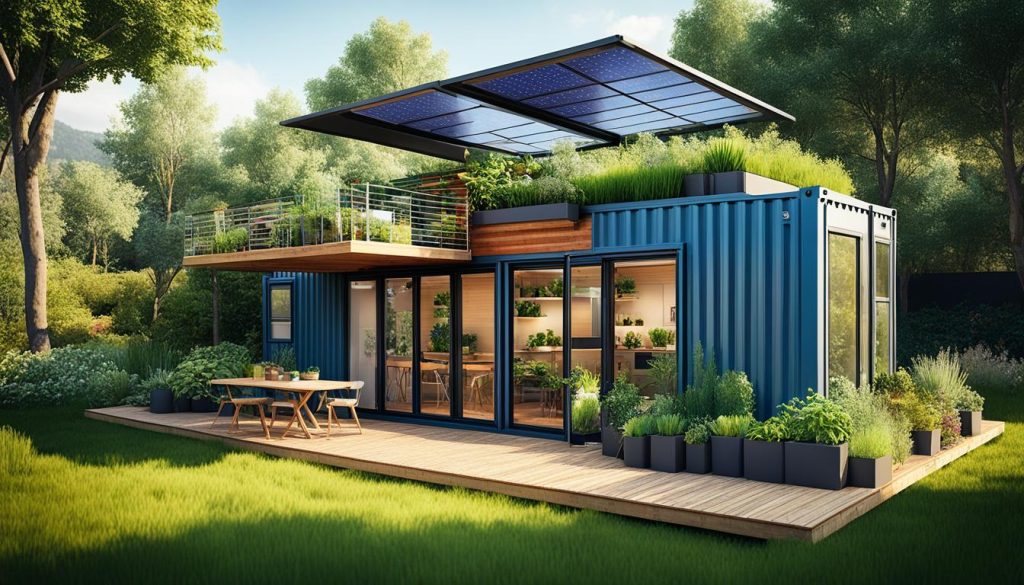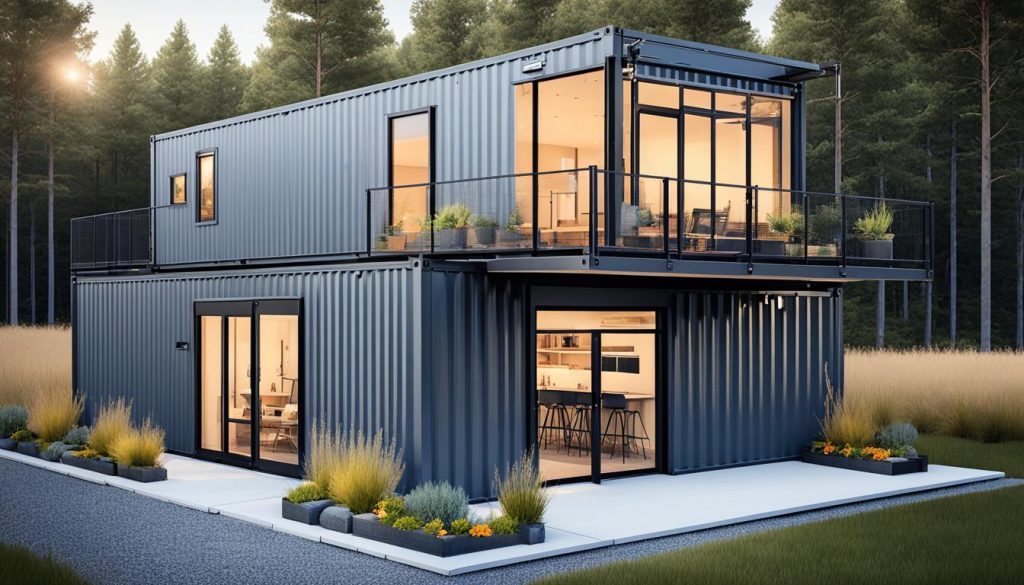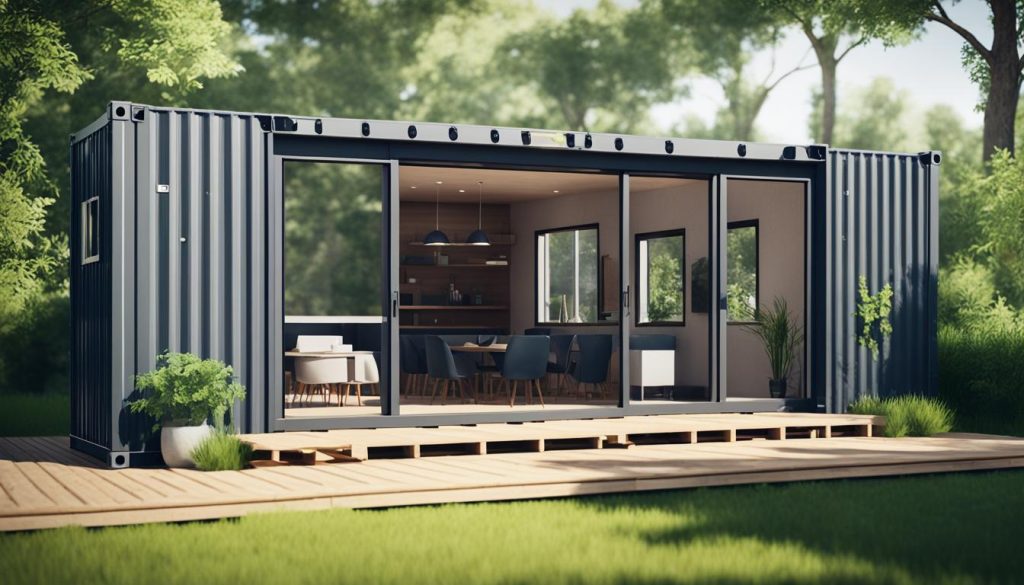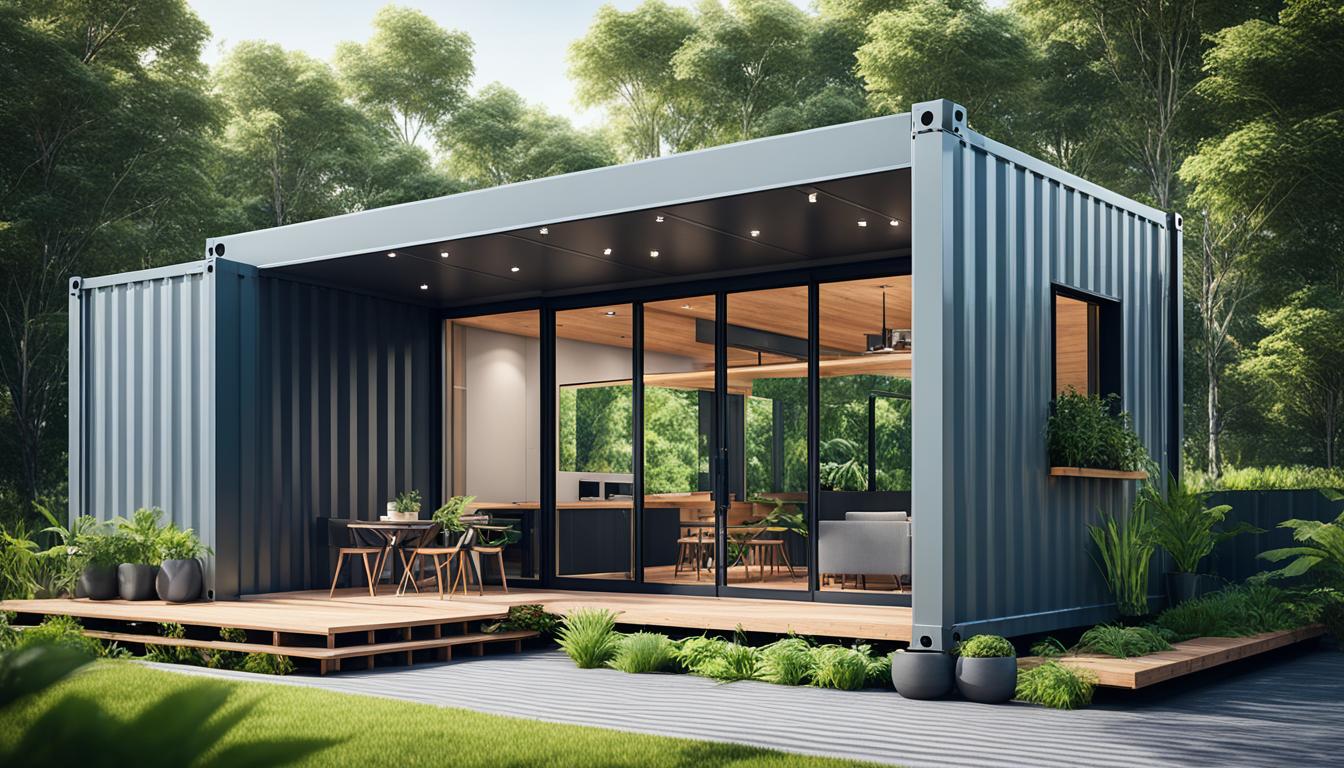I’ve always been drawn to the idea of cargo container homes. They’re unique and offer a fresh take on building. They mix modern design with being green and saving money. Turning a simple shipping container into a cozy home is really interesting to me.
A study by Allied Market Research says the market for shipping container homes will grow to $73,070,500 by 2025. This is up from $44,768,600 in 2017. This shows more people see the value in these homes. I’m excited to share why they’re a great choice for building a home.
In this article, I’ll show you how to build your own cargo container house. We’ll look at the benefits and how to plan your dream home. Let’s dive into container architecture and see how it can change our homes.
Unleashing the Potential: Benefits of Cargo Container Homes

Building a home from shipping containers is unique and catches the eye. It’s also very practical. These homes are eco-friendly, cost-effective, durable, and sustainable.
Cost-Effective Construction
One big plus of cargo container homes is how affordable they are. You can buy a used container for about $2,500. New ones are a bit pricier, around $5,000. This makes them cheaper than traditional houses.
They also need less building materials and labor. So, they’re a smart choice for saving money.
Durable and Low-Maintenance
Shipping containers are made of Corten steel, which keeps cargo safe on long trips. These homes can handle bad weather better than regular houses. You can add extra security with patio doors and windows.
They’re easy to keep up, making them great for homeowners.
Eco-Friendly and Sustainable
Steel is often recycled and up to 90 percent of it can be reused. Using shipping containers means the steel gets fully recycled. This saves a lot of energy, making these homes eco-friendly and sustainable.
| Feature | Benefit |
|---|---|
| Cost-Effective Construction | Used shipping containers cost around $2,500, and new ones around $5,000. Reduced building materials and labor make container homes more affordable. |
| Durable and Low-Maintenance | Shipping containers are made of weathering steel, which can withstand harsh weather conditions. They require fewer repairs and updates compared to traditional homes. |
| Eco-Friendly and Sustainable | Steel is highly recyclable, and container homes upcycle the existing material without the energy-intensive process of scrapping and melting down new steel. |
Planning Your Cargo Container House Journey

Building your dream cargo container house needs careful planning. Make sure you have all the permits and permission before buying a container. Check if a shipping container home fits local and state rules.
Determining Your Lifestyle Needs
Think about what you need for your home. This will help pick the right size and type of container. Prices for containers range from $2,000 to $6,000, based on size, age, and where it’s from. If you’re far from the depot, getting it there can cost a lot.
Choosing the Ideal Location
A 40-foot, high-cube container is popular for homes. It gives you about 320 square feet of space and 9.5-foot ceilings. If your project is simple, you might do it yourself. But for complex designs, work with experts to make sure it’s safe.
Designing Your Dream Layout
Use tools like Sketchup or Planner5D for your design. They help you plan and meet building rules. Remember, good planning and details are key for a successful project.
cargo container house: A Modular Marvel

Building your dream home from a shipping container is exciting. The 40-foot, high-cube container is a top pick. It gives you about 320 square feet of space and 9.5-foot ceilings. This makes it perfect for homes with one to two bedrooms, a kitchen, and a living area.
Selecting the Right Shipping Container Size
But there are other sizes too. You can use 20-foot or even 10-foot containers, depending on what you need. Think about your lifestyle and the space you have before picking the right size for your home.
Sourcing New “One-Trip” Containers
Choosing the right company is key when buying a shipping container. Look at costs, delivery, the company’s reputation, and more. “One-trip” containers are new and haven’t been used before. They don’t need painting or maintenance and are great for building homes.
By picking the right size and quality containers, you can make a home that’s both functional and stylish. With careful planning, your container home can be a modern, eco-friendly dream.
Laying the Foundation for Your Container Abode

After getting your shipping containers, pick the best spot for your house. Think about the soil, utilities, and the foundation type. This will help support your modular container housing.
Preparing the Land
First, clear and level the land. You might need to dig, grade, and make sure the ground can hold your house. Don’t forget to dig trenches for utilities like water, electricity, and sewage.
Choosing the Suitable Foundation
The foundation for your cargo container house can be simple or complex. It depends on the number of containers and your needs. Think about what you can afford and what you like.
For a concrete foundation, add steel plates where the container blocks will sit. This lets you weld the containers to the foundation. It makes your modular container housing strong and stable.
The foundation is key to your cargo container house‘s stability and life span. Plan and prepare the land well. This will give you a strong base for your dream home.
Transforming Containers into a Cozy Home
I’m excited to turn these strong steel boxes into a warm and inviting home. First, I remove the metal from the walls. Tools like a plasma cutter, cutting torch, angle grinder, or a jigsaw help with this.
After cutting, I start adding doors, windows, and floors. Some people use wood framing, while others weld metal frames to the container. The aim is to make the space feel warm and welcoming.
Insulation is key to a cozy living space in my container home. I pick the right insulation materials and methods to keep the temperature right. With each step, I’m getting closer to my dream of living in a sustainable, unique home.

